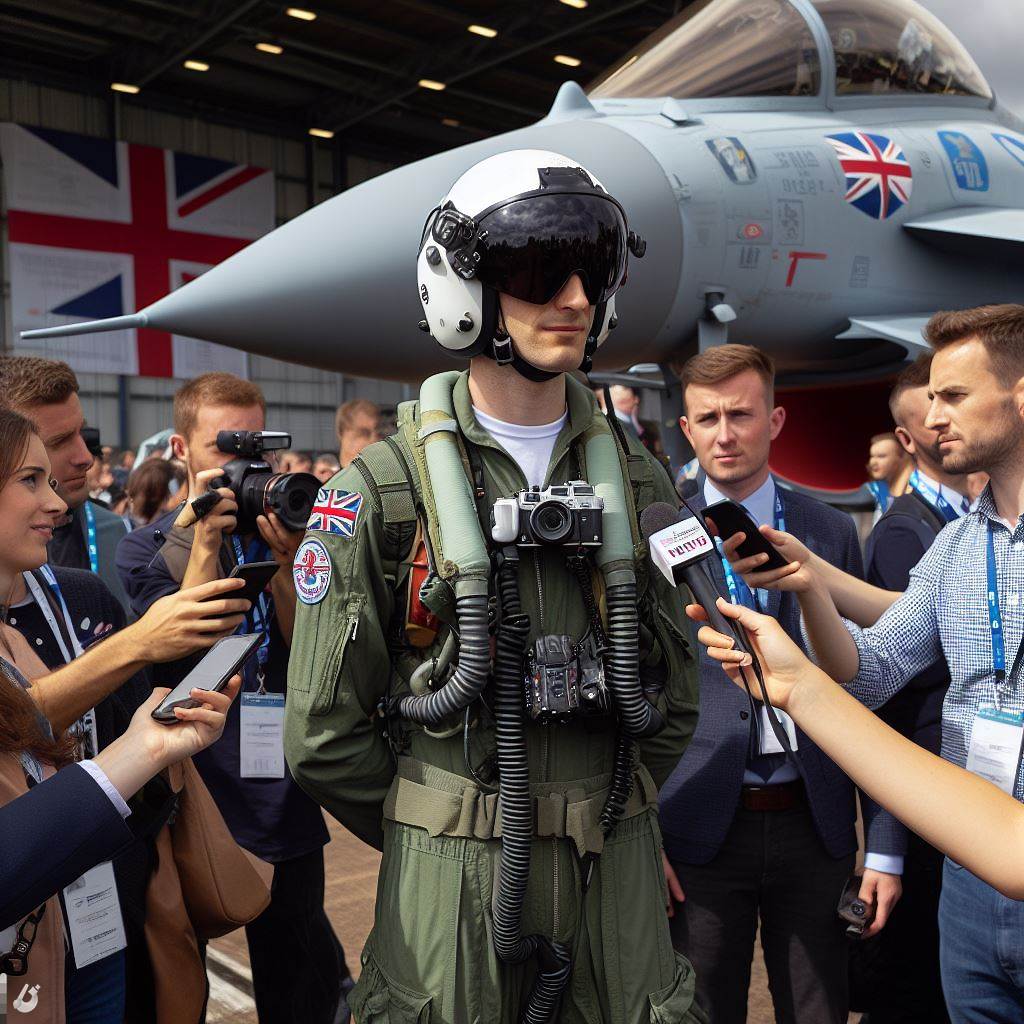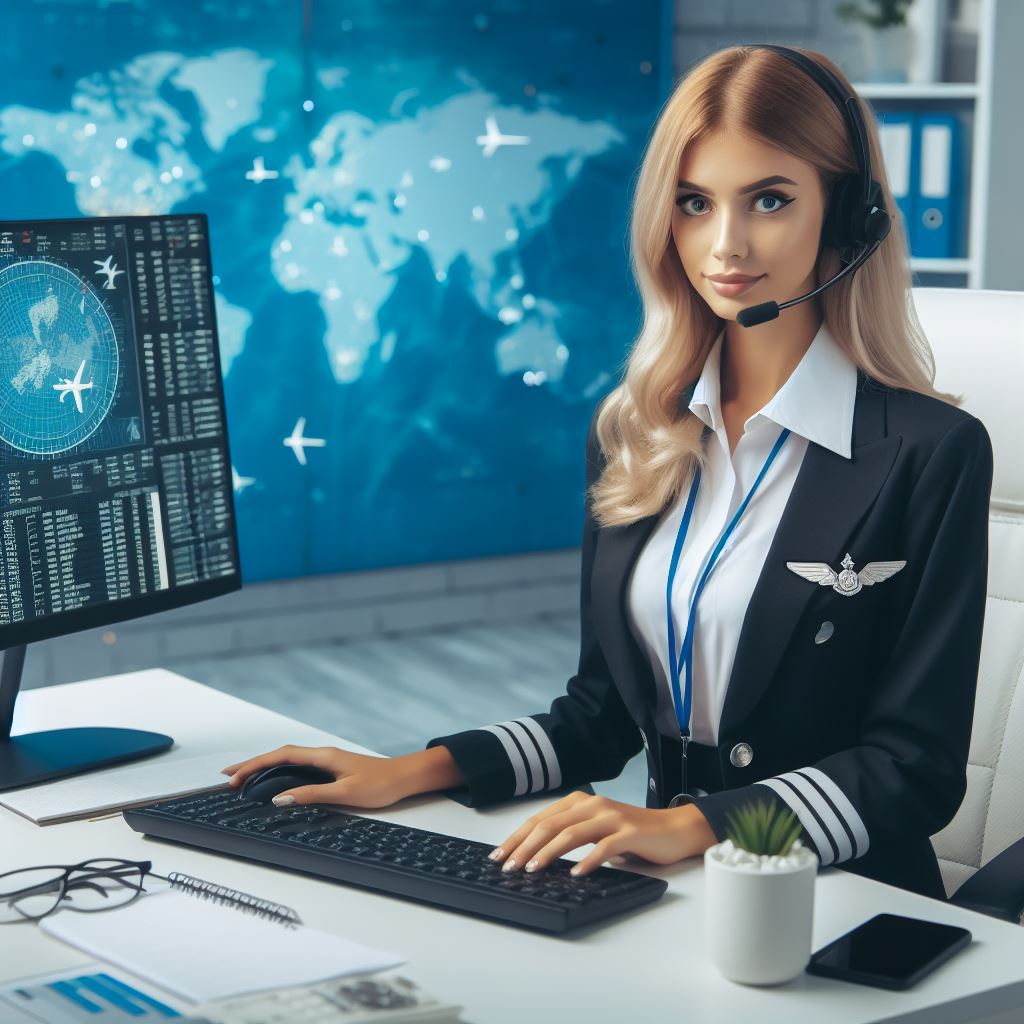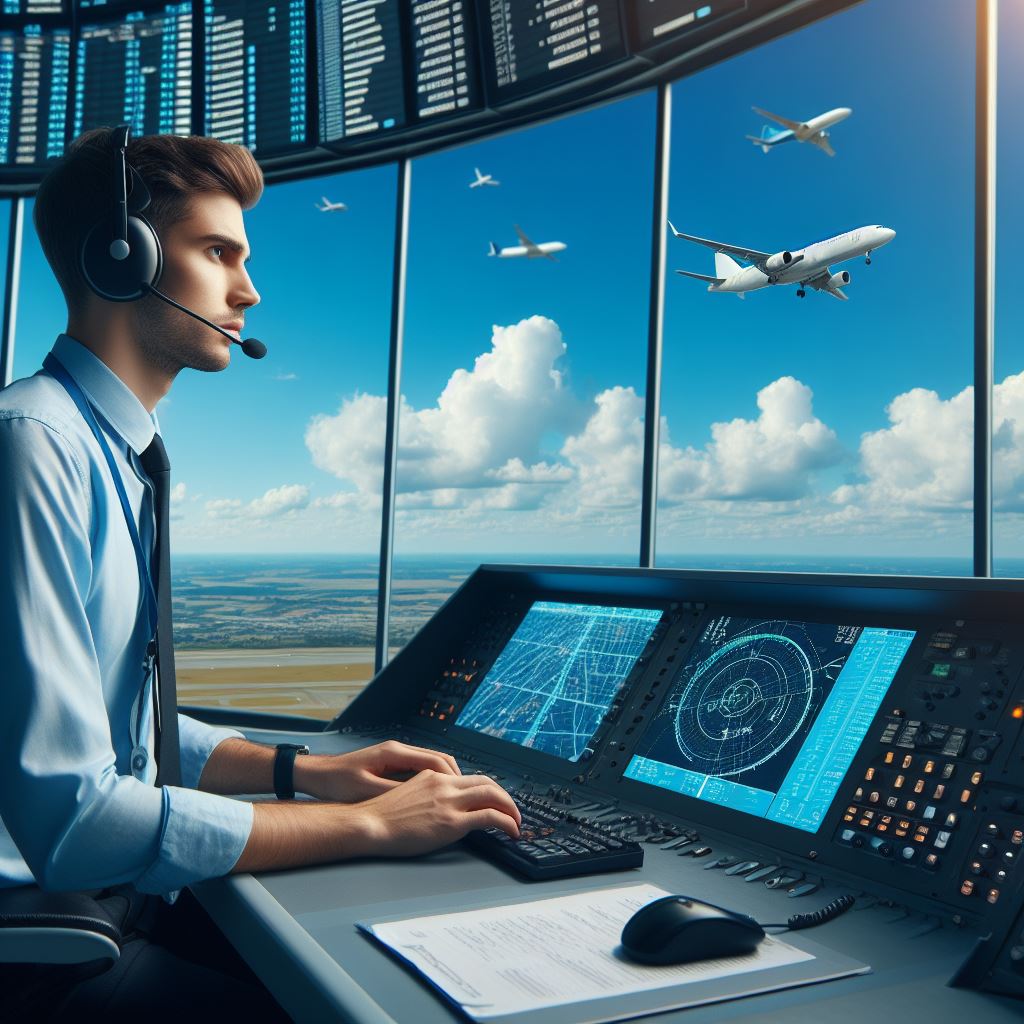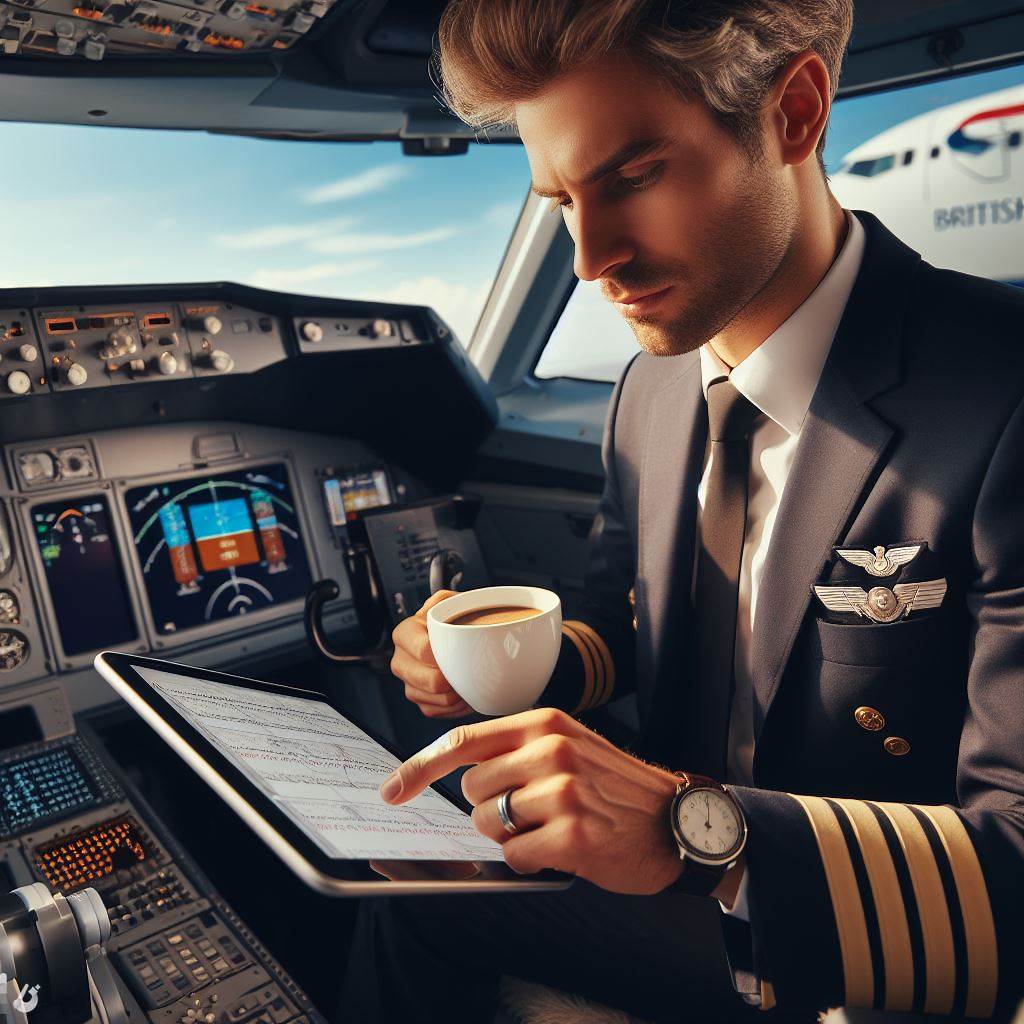Introduction
In the aviation industry in the UK, pilot gear and equipment essentials play a crucial role.
Having the right gear and equipment is essential for pilots to ensure safety and efficiency during flights.
The UK has a thriving aviation industry with stringent regulations, demanding top-notch gear and equipment for pilots.
In order to operate an aircraft safely and effectively, pilots rely heavily on their gear and equipment.
From flight suits to communication devices, every piece of gear serves a crucial purpose in ensuring a successful flight.
The importance of pilot gear and equipment essentials cannot be stressed enough, as they directly impact the performance and safety of both the pilot and the passengers.
The aviation industry in the UK is known for its rigorous standards and strict regulations.
Therefore, pilots must adhere to specific guidelines when it comes to their gear and equipment.
Flight helmets, for instance, protect pilots from potential head injuries, while aviation headsets ensure clear communication with air traffic control and fellow crew members.
In addition to personal protective equipment, pilots also rely on navigation tools, such as GPS and aviation charts, to accurately navigate through the skies.
Furthermore, flight suits made from flame-resistant materials protect pilots from severe burns in the event of a fire onboard.
Overall, pilot gear and equipment essentials are vital components of the aviation industry in the UK, ensuring safety and efficiency in every flight.
Pilots must stay up to date with the latest advancements in technology and regulations to enhance their skills and effectiveness in the cockpit.
Flight Uniform
When it comes to the gear and equipment essentials of UK pilots, the flight uniform plays a significant role.
A. Standard flight uniform worn by UK pilots
The standard flight uniform worn by UK pilots is designed to be professional, functional, and comfortable.
Personalized UK Career Consulting
Receive tailored career guidance designed just for you. Get actionable steps and expert support to boost your career in 1-3 days. Take control of your career now.
Get StartedB. Importance of a well-fitted and comfortable uniform
A well-fitted and comfortable uniform is of utmost importance as it enhances safety and performance during flights.
A properly fitted uniform allows pilots to move freely, ensuring they can operate the controls and instruments without any restrictions.
Comfort is crucial as pilots spend long hours in the cockpit, and discomfort can lead to distractions and reduced focus.
The flight uniform typically consists of a shirt, tie, jacket, trousers, and a hat, creating a smart and professional appearance.
C. Materials used in the uniform and their benefits
The materials used in the flight uniform are carefully chosen to withstand the demands and conditions of aviation.
One such material is polyester, which offers excellent durability, flexibility, and resistance to creasing.
It also has moisture-wicking properties, keeping pilots dry and comfortable, even during intense physical activity.
Cotton is another popular fabric used in flight uniforms for its breathability and comfort.
It allows air to circulate, preventing excessive sweating and providing a cool feeling in warm weather.
Some flight uniforms incorporate advanced features like flame resistance, ensuring additional protection in emergency situations.
The use of high-visibility fabrics and reflective tapes enhances visibility, particularly during night operations or in low-light conditions.
Pockets and compartments in the uniform offer convenient storage for essential items like pens, notepads, and communication devices.
These functional additions enable pilots to access their tools quickly, improving efficiency and communication during flights.
The flight uniform is often personalized with individual patches, badges, and nametags, highlighting the pilot’s rank and airline affiliation.
Your Dream Job Starts with a Perfect CV
Get a tailored CV and cover letter that captures your unique strengths and stands out in your industry. Let us help you make an unforgettable first impression.
Get StartedThe appearance of a well-groomed and professional pilot in a well-fitted uniform instills confidence and trust among passengers.
Furthermore, the flight uniform serves as a symbol of authority and expertise, reinforcing the pilot’s competence and experience.
In short, the flight uniform is an essential component of a UK pilot’s gear and equipment arsenal.
It not only ensures a professional appearance but also enhances safety, comfort, and functionality during flights.
By utilizing carefully selected materials and incorporating practical features, the flight uniform plays a vital role in pilot performance and overall aviation operations.
Read: Famous British Pilots in History
Headgear
In the world of aviation, headgear holds immense importance for pilots.
It not only protects their head but also plays a crucial role in facilitating communication and ensuring comfort during flights.
A. Types of Headgear
- Helmets: These offer maximum protection and are primarily used during high-risk aerobatic or military flights.
- Caps: Often worn by commercial pilots, caps provide a professional appearance and shield the eyes from glare.
- Beanies: Pilots flying in colder climates opt for beanies to keep their head warm during long flights.
B. Importance of Appropriate Headgear
Wearing the right headgear is vital for both safety and comfort reasons.
- Safety: Headgear, especially helmets, offer protection against potential injuries during emergency landings or turbulence.
- Comfort: The right headgear ensures pilots can focus on flying without any discomfort or distraction.
- Visibility: Caps with a visor or sunglasses protect pilots’ eyes from glaring sunlight, ensuring clear visibility.
C. Headsets and Communication Devices
Alongside headgear, pilots rely heavily on headsets and communication devices to stay connected and ensure smooth and efficient communication.
- Headsets: These devices not only provide pilots with clear audio but also reduce ambient noise, improving communication quality.
- Microphones: In combination with headsets, microphones allow pilots to transmit their voice clearly to air traffic controllers.
- Earpieces: Used with handheld radios or intercom systems, earpieces enable pilots to listen to incoming transmissions discreetly.
In addition to facilitating communication, headsets and other devices enhance pilots’ situational awareness and overall flight experience.
In essence, headgear serves multiple purposes in the world of aviation.
By wearing appropriate headgear, pilots ensure their safety and comfort.
Whether it is a helmet for maximum protection, a cap for a professional image, or a beanie for warmth, pilots have various options to choose from.
Optimize Your LinkedIn for Success
Boost your LinkedIn profile with a professional bio, keyword-rich headline, and strategic recommendations that attract recruiters. Stand out from the crowd and get noticed.
Optimize NowFurthermore, headsets and communication devices play a significant role in maintaining clear and efficient communication, ultimately enhancing the overall flight experience.
Pilots must recognize the importance of these gear and equipment essentials to ensure safe and successful flights.
Read: Stress Management for UK Pilots
Eyewear
A. Types of eyewear preferred by UK pilots
- Aviator sunglasses: A classic choice among pilots, providing a stylish and iconic look.
- Polarized sunglasses: Reduce glare and improve visibility, especially when flying in bright sunlight.
- Prescription glasses: Many pilots require corrective lenses and opt for prescription sunglasses or goggles.
B. Requirements for eyewear in terms of functionality and protection
- UV protection: Essential to shield pilots’ eyes from harmful ultraviolet (UV) rays.
- Impact resistance: Eyewear should be able to withstand potential impacts or debris.
- Anti-fog capabilities: Flying at high altitudes can cause fogging, so anti-fog treatments or built-in vents are crucial.
- Distortion-free lenses: Crystal-clear vision is vital for pilots to recognize and react to objects accurately.
- Comfortable fit: Eyewear must have a secure fit to prevent slipping during maneuvers or turbulence.
C. Brands and models of pilot eyewear
- Ray-Ban Aviator Sunglasses: A timeless choice, known for their iconic design and high-quality lenses.
- Serengeti Aviator Sunglasses: Preferred by many pilots for their exceptional lens technology that provides superior clarity and glare reduction.
- Oakley Flak Jacket Sunglasses: Widely used in the aviation industry, these sunglasses offer UV protection and impact resistance.
- Randolph Engineering Aviator Sunglasses: Trusted by military pilots, these glasses are built to withstand rigorous conditions with their durable frames and distortion-free lenses.
- Revision Hellfly Ballistic Sunglasses: Designed for tactical use, these sunglasses feature ballistic-rated lenses and are popular among helicopter pilots.
In general, eyewear is an essential gear for UK pilots that offers both functionality and protection.
Aviator sunglasses, polarized sunglasses, and prescription glasses are preferred options.
The eyewear must meet specific requirements such as UV protection, impact resistance, anti-fog capabilities, distortion-free lenses, and a comfortable fit.
Several reputable brands and models, including Ray-Ban, Serengeti, Oakley, Randolph Engineering, and
Revision, are popular among UK pilots for their reliability and superior performance in the demanding aviation environment.
Read: Navigating UK Weather: Tips for Pilots
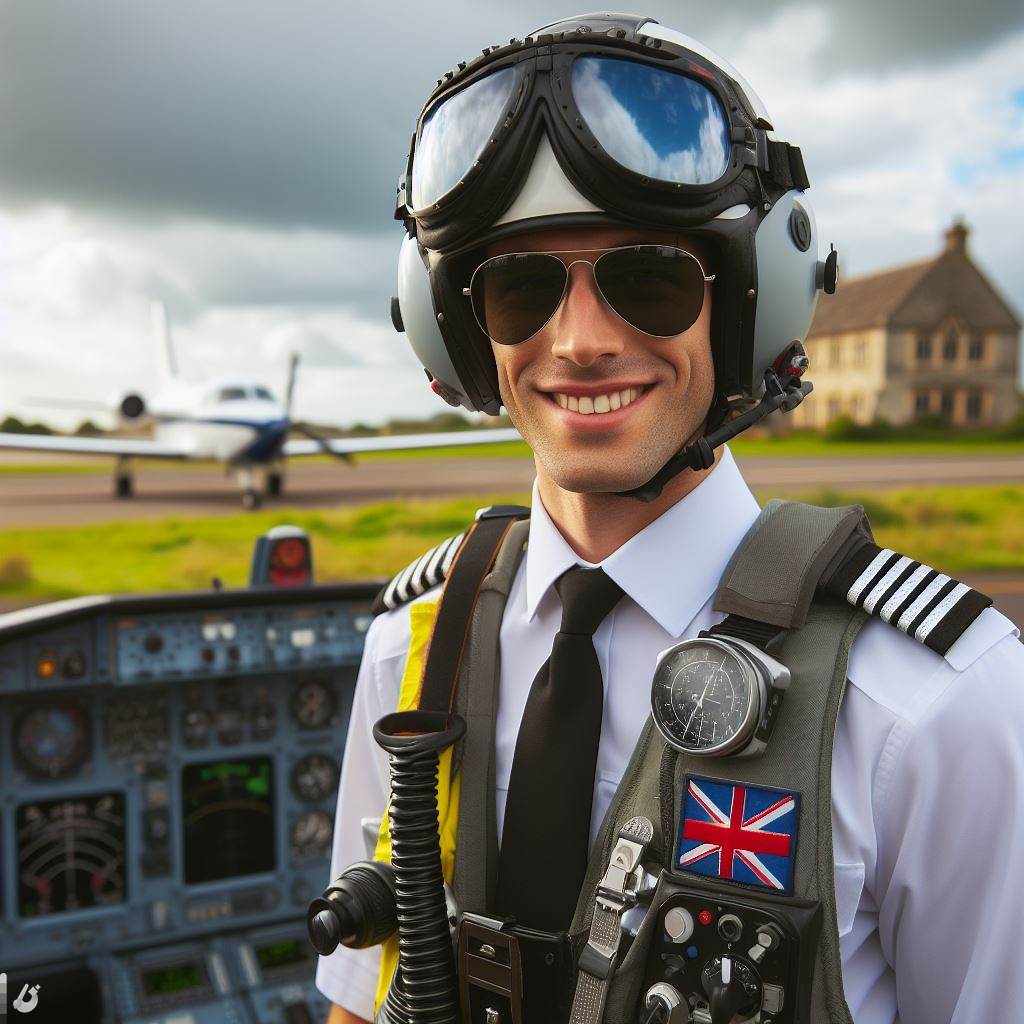
Safety Equipment
As a UK pilot, it is crucial to have the necessary safety equipment to ensure a safe and successful flight.
A. Overview of essential safety equipment for UK pilots
The following is an overview of the essential safety equipment for UK pilots:
- Life Jackets: Life jackets are a key safety item for pilots in case of an emergency landing over water. They provide buoyancy and flotation to keep pilots safe until rescue.
- Oxygen Masks: Oxygen masks are essential at high altitudes where the oxygen level is insufficient. They provide pilots with a supplementary oxygen supply to prevent hypoxia and ensure clear thinking and performance.
- Fire-Resistant Clothing: Pilots must wear fire-resistant clothing to protect themselves from any potential fires or emergencies during flight. This clothing can withstand high temperatures and prevent severe burns.
B. Importance of regular maintenance and inspection of safety equipment
Regular maintenance and inspection of safety equipment is of utmost importance to ensure its effectiveness and reliability:
- Inspection: Regular inspections of safety equipment should be conducted to identify any damage or malfunction. This includes checking for proper inflation of life jackets and testing the oxygen mask system.
- Maintenance: Safety equipment should undergo regular maintenance and servicing to ensure that it remains in optimal condition.
This includes replacing expired oxygen canisters and ensuring fire-resistant clothing is not damaged. - Training: Pilots should be trained on the use and proper maintenance of safety equipment. This includes familiarity with activating life jackets, using oxygen masks correctly, and understanding fire safety procedures.
In brief, having the necessary safety equipment is vital for UK pilots to ensure their safety and the safety of their passengers.
Life jackets, oxygen masks, and fire-resistant clothing are essential items that protect pilots in emergency situations.
Regular maintenance, inspection, and proper training are crucial to ensure the effectiveness and reliability of the safety equipment.
By prioritizing safety equipment, pilots can enhance their preparedness and handle unforeseen circumstances with confidence.
Read: The Impact of Brexit on UK Pilots
Navigation Tools
In order to navigate through the skies of the United Kingdom, pilots rely on a variety of navigation tools and equipment.
These tools are essential for ensuring safe and efficient flights. Let’s take a closer look at some of the most important navigation tools used by UK pilots.
A. Navigation Tools and Equipment
- GPS Devices: Global Positioning System (GPS) devices are widely used by UK pilots for navigation. These devices provide accurate information about the aircraft’s position, altitude, groundspeed, and route.
- Charts: Pilots use aeronautical charts that contain crucial information such as airports, airspace boundaries, navigation aids, terrain features, and topographic details. These charts help pilots plan and navigate their routes.
- Flight Computers: Flight computers are electronic devices that are used to perform various calculations required during flight planning and navigation.
They can perform tasks such as fuel consumption calculation, airspeed and altitude conversions, and time-speed-distance calculations.
B. GPS Devices, Charts, and Flight Computers
GPS devices have revolutionized navigation for UK pilots.
They provide precise location data, allowing pilots to accurately track their aircraft’s position and navigate through intricate airspace and challenging weather conditions.
Furthermore, aeronautical charts are indispensable tools for pilots. These charts are typically composed of multiple sections that cover specific geographical areas.
They include detailed information on airports, radio frequencies, airspace classifications, and obstacles that pilots need to be aware of during their flights.
Flight computers, on the other hand, are versatile devices that simplify calculations and aid in flight planning.
They can instantly provide information crucial to decision-making, such as groundspeed, fuel consumption, and estimated time of arrival.
C. Importance of Being Proficient in Using and Interpreting Navigation Tools
Being proficient in using and interpreting navigation tools is essential for UK pilots. It directly affects the safety and efficiency of their flights.
A thorough understanding of these tools enables pilots to navigate accurately, avoid hazardous situations, and make informed decisions.
Navigating solely by GPS devices without proper knowledge of charts and flight computers can be risky, as technical failures or GPS signal interference may occur.
Having backup tools and the ability to interpret and cross-reference information from multiple sources ensures redundancy and enhances flight safety.
In addition, proficiency in navigation tools allows pilots to efficiently plan their flights, select optimal routes, and accurately estimate fuel consumption.
This proficiency contributes to cost-effectiveness by optimizing flight time and reducing fuel wastage, resulting in environmental benefits.
Navigation tools are the backbone of every UK pilot’s journey. GPS devices, charts, and flight computers work harmoniously to provide accurate and reliable information, facilitating safe and efficient flights.
Proficiency in using these tools is paramount to ensure the highest standards of navigation and flight operation.
Personal Items
A. Personal items that pilots may carry
Pilots carry various personal items that are essential for their performance and safety during flights.
Some examples include logbooks, flight manuals, and personal protective items.
1. Logbooks
Logbooks are crucial for pilots as they record flight hours, routes, and maintenance activities.
These logs serve as a reference for future flights and also provide documentation for regulatory purposes.
2. Flight manuals
Flight manuals contain detailed information about the aircraft, including its systems, procedures, and emergency protocols.
Pilots use these manuals during pre-flight preparations and in-flight operations to ensure safe and efficient performance.
3. Personal protective items
Personal protective items, such as headsets, goggles, and gloves, play a vital role in enhancing pilot safety.
Headsets help pilots communicate with air traffic control and reduce noise fatigue during long flights. G
Goggles protect their eyes from bright sunlight, glare, and flying debris.
Gloves provide a better grip and protect their hands during manual flying or emergency situations.
B. Enhancing Pilot Performance
Carrying these personal items not only ensures regulatory compliance but also enhances pilot performance in various ways.
Logbooks allow pilots to track their flight experience, which is essential for career progression.
They help pilots monitor their proficiency and identify areas that require improvement.
By keeping a detailed record, pilots can effectively plan future training and upgrade their skills.
Flight manuals act as a comprehensive guide, allowing pilots to quickly access critical information during different phases of a flight.
Having easy access to emergency procedures can significantly reduce response time in critical situations, improving overall safety.
Additionally, referring to flight manuals during pre-flight preparations ensures that pilots are well-informed about the aircraft’s capabilities and limitations, leading to a smoother flight.
Personal protective items contribute to pilot comfort, which is crucial for focus and concentration.
Headsets eliminate distractions from engine noise, enabling pilots to communicate clearly with air traffic control and make informed decisions based on radio transmissions.
Goggles help maintain good visibility by reducing eye strain from bright sunlight, ensuring pilots can see critical details and potential hazards accurately.
Gloves provide a better grip on the controls, reducing the chances of accidents and facilitating precise maneuvering.
C. Ensuring Pilot Safety
The role of personal items in pilot safety cannot be overstated. They are designed to minimize risks and protect pilots during various flight conditions.
Logbooks not only serve as a legal requirement but also act as a safety tool.
By maintaining accurate records, pilots can ensure regular aircraft maintenance and identify any trends or anomalies that could affect safety.
This helps prevent potential accidents or incidents caused by mechanical faults.
Flight manuals contain vital safety instructions, emergency checklists, and procedures that pilots must follow in critical situations.
By having access to these instructions, pilots can effectively respond to emergencies, potentially avoiding disastrous outcomes.
Being well-versed in the contents of flight manuals also enhances situational awareness, allowing pilots to proactively address potential safety threats.
Personal protective items provide an additional layer of safety. Headsets protect pilots’ hearing from long-term damage due to excessive noise exposure.
Goggles shield their eyes from harmful UV rays, which can cause vision problems over time.
Gloves offer hand protection, reducing the risk of injury during turbulent flights or emergency landings.
In summary, personal items such as logbooks, flight manuals, and personal protective gear are essential tools for pilots.
They not only enhance pilot performance but also contribute significantly to their safety.
Pilots should ensure they carry and utilize these items properly to maximize their effectiveness and ensure a safe and successful flight experience.
Conclusion
The importance of UK pilot gear and equipment essentials cannot be overstated.
These essential items play a crucial role in ensuring pilot safety, comfort, and overall performance.
Throughout this blog section , we have highlighted the significance of having the necessary gear and equipment for pilots in the UK.
These essentials include flight suits, helmets, gloves, and communication devices.
The use of high-quality gear not only protects pilots from potential hazards but also enhances their performance in various flight conditions.
Moreover, it promotes comfort during long flights, reducing fatigue and stress levels.
The gear and equipment essentials are designed to meet the rigorous demands of the aviation industry.
They provide protection against extreme temperatures, turbulence, and other challenging conditions that pilots may encounter.
By ensuring optimal safety and comfort, these essentials allow pilots to focus on flying without distractions and perform their duties with confidence and efficiency, contributing to a safer and more enjoyable flying experience for all.
As technology and aviation regulations continue to evolve, it becomes imperative for pilots to stay updated with the latest gear advancements.
New innovations can greatly enhance safety, efficiency, and overall performance in the cockpit.
By keeping up with these advancements, pilots can benefit from state-of-the-art gear that can provide them with an edge in their profession.
Continuous learning and adaptation to new equipment not only ensure their effectiveness but also demonstrate a commitment to the highest standards of professionalism and safety.
Investing in high-quality gear and staying updated with advancements is not just a recommendation but a necessity for every UK pilot.
[E-Book for Sale]
500 Cutting-Edge Tech Startup Ideas for 2024 & 2025: Innovate, Create, Dominate
$19.99 • 500 Tech Startup Ideas • 62 pages
You will get inspired with 500 innovative tech startup ideas for 2024 and 2025, complete with concise descriptions to help you kickstart your entrepreneurial journey in AI, Blockchain, IoT, Fintech, and AR/VR.

